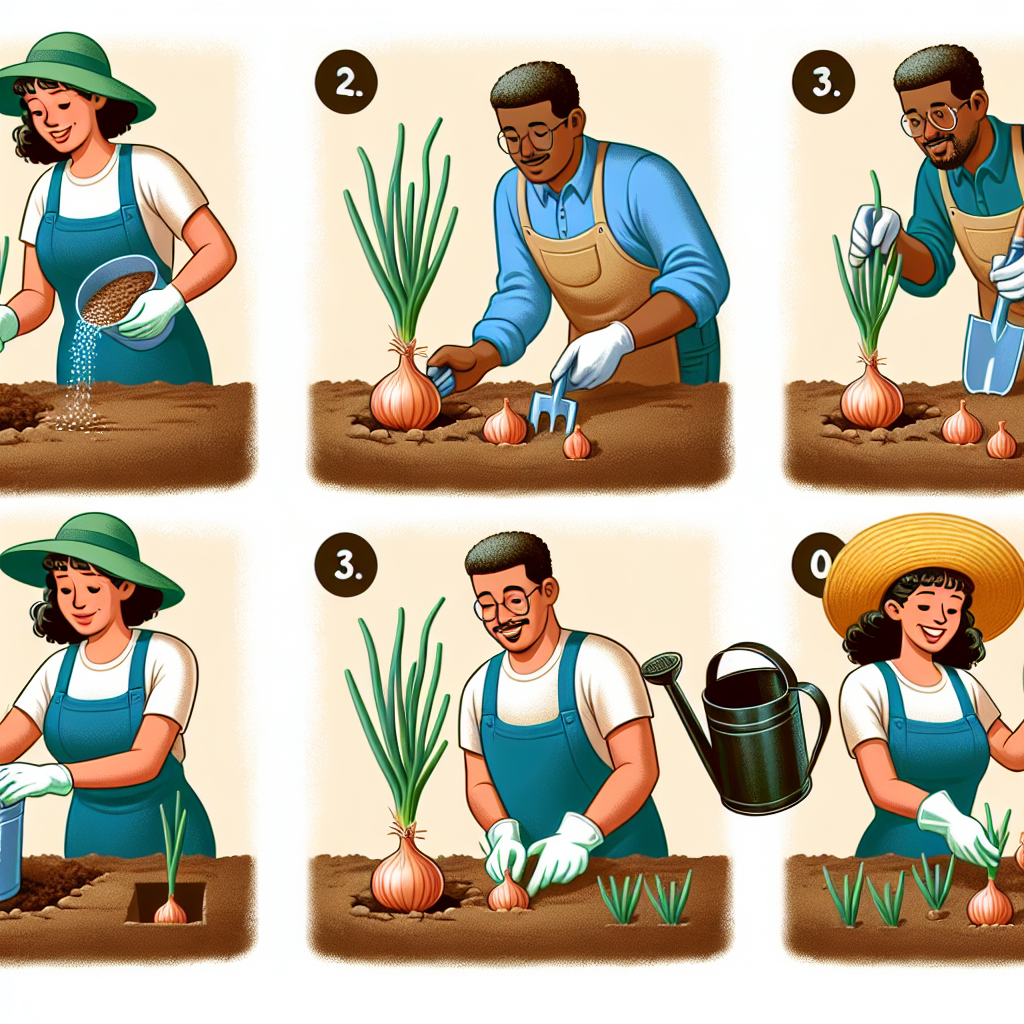
How to plant onion seeds
How to Plant Onion Seeds: A Comprehensive Guide
Onions are a versatile and essential ingredient in many dishes, making them a staple in home gardens and commercial farms alike. If you’re interested in cultivating your own onions, understanding the process of planting onion seeds is crucial. This guide will walk you through everything you need to know, from choosing the right seeds to spacing and care for your budding plants.
Understanding Onion Varieties
Before embarking on the journey of sowing your onion seeds, it’s important to comprehend the different varieties of onions available. Onions can be classified based on their color, such as yellow, red, and white, as well as by their growth cycles — short, intermediate, and long-day onions. Here’s a brief overview of each type:
- Yellow Onions: These are the most commonly grown onions and are ideal for everyday cooking.
- Red Onions: Known for their vibrant color and slightly sweeter taste, they are often used raw in salads.
- White Onions: These onions have a more potent flavor and are perfect for salsas and various dishes.
Choosing the Right Location
Onions thrive in well-drained soils that receive ample sunlight. Here's how to choose the best planting site for your onion seeds:
- Sunlight: Select a location that gets at least 6-8 hours of direct sunlight each day. This encourages healthy growth.
- Soil Quality: Opt for loose, loamy soil that is rich in organic matter. Good drainage is essential to prevent waterlogging.
- pH Level: Aim for a soil pH between 6.0 and 7.0 for optimal nutrient absorption.
Preparing the Soil
Soil preparation is a crucial step before planting onion seeds. Properly prepared soil will offer the necessary nutrients and support for healthy growth:
- Clear the Area: Remove weeds, rocks, and debris from the planting site.
- Loosen the Soil: Use a spade or tiller to loosen the top 12-15 inches of soil.
- Enrich the Soil: Mix in compost or well-rotted manure to improve soil structure and nutrient content.
- Level the Surface: Rake the area smooth to create an even planting bed.
Sowing the Seeds
Now that you’ve prepared the soil, it’s time to learn how to plant onion seeds effectively.
- Seed Selection: Choose high-quality seeds from a reputable source to ensure good germination rates.
- Planting Depth: Sow the seeds about 1/4 inch deep in rows. Space your rows approximately 12-18 inches apart.
- Watering: After planting, gently water the area with a fine spray to keep the soil moist but not soggy.
Care for Your Onion Plants
After planting, maintaining your onion seeds is essential for a successful harvest. Here are some key care tips:
- Watering: Keep the soil consistently moist, especially during dry spells. Onions prefer regular watering but do not like to sit in water.
- Weeding: Regularly check for weeds and remove them to prevent competition for nutrients and space.
- Fertilizing: Apply a balanced fertilizer once your seedlings are about 4 inches tall to support growth.
Pest and Disease Management
Onions can be threatened by various pests and diseases. Familiarizing yourself with these can save your crop:
- Pests: Watch out for onion maggots, thrips, and aphids. Use organic pesticides or natural deterrents if infestations occur.
- Diseases: Be on the lookout for fungal diseases like downy mildew or white rot. Crop rotation and good airflow can mitigate these issues.
Harvesting Onions
Knowing when and how to harvest your onions is key to enjoying your hard work:
- Signs of Maturity: Onions are ready to harvest when the tops begin to fall over and turn yellow.
- Harvesting: Gently dig up the onions with a spade, being careful not to bruise them.
- Drying: Place the harvested onions in a warm, dry location to cure for a couple of weeks.
Storing Your Harvest
Once your onions are harvested and dried, how you store them makes a significant difference in their longevity:
- Cool, Dry Place: Store your onions in a cool, ventilated area, away from direct sunlight.
- Avoid Moisture: Ensure they’re kept dry to prevent rot.
- Check for Spoilage: Regularly check your stored onions for signs of spoilage and remove any affected ones.
Conclusion
Growing onions from seeds can be a rewarding experience, especially when you see their success in your garden. By following the steps outlined in this guide, anyone can successfully sow and grow onions. With careful prep, attention to detail, and proper care, you can enjoy the benefits of your homegrown onions all season long.
"Growing your food not only provides you with fresh vegetables but also connects you to the earth and enhances your culinary experience." — Unknown
There you have it — a complete guide on how to plant onion seeds and take care of them until harvest. Enjoy your gardening journey, and may your onion yield be plentiful!
By Guest, Published on August 16th, 2024